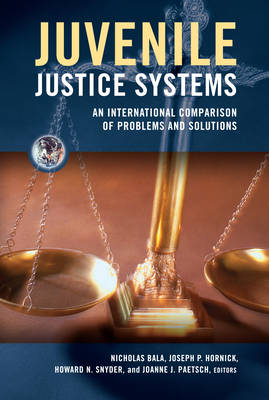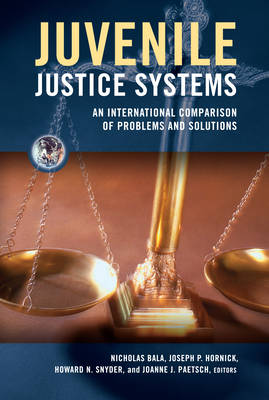
- Afhalen na 1 uur in een winkel met voorraad
- Gratis thuislevering in België vanaf € 30
- Ruim aanbod met 7 miljoen producten
- Afhalen na 1 uur in een winkel met voorraad
- Gratis thuislevering in België vanaf € 30
- Ruim aanbod met 7 miljoen producten
Zoeken
Juvenile Justice Systems
An International Comparison of Problems and Solutions
Nicholas Bala, Joseph P Hornick, Howard N Snyder
Paperback | Engels
€ 59,45
+ 118 punten
Omschrijving
Despite a decrease in overall crime rates, the issues of youth crime and youth violence are a growing political and public policy concern in many countries officials are trying to develop more effective strategies to prevent youth crime, develop new alternatives to traditional juvenile justice systems, and find better methods for handling serious and persistent offenders. Juvenile Justice Systems provides a detailed description and analysis of juvenile justice systems in eight predominantly Englishspeaking jurisdictions with a common legal heritage: the United States, Canada, England, Scotland, Northern Ireland, the Republic of Ireland, Australia, and New Zealand. Experts from each country analyze the political and social context of youth crime in their jurisdiction, describe the rates of youth crime, and identify the policies and innovative approaches that have been successful in their countries. This book will be of special interest to students in criminology, social work, and law; policy-makers at various levels of government; program developers; and professionals, such as lawyers, judges, probation officers, and correctional workers who provide services in the juvenile justice system and are seeking a broader perspective on the issues they are facing.
Specificaties
Betrokkenen
- Auteur(s):
- Uitgeverij:
Inhoud
- Aantal bladzijden:
- 278
- Taal:
- Engels
Eigenschappen
- Productcode (EAN):
- 9781550771275
- Verschijningsdatum:
- 15/07/2001
- Uitvoering:
- Paperback
- Formaat:
- Trade paperback (VS)
- Afmetingen:
- 152 mm x 226 mm
- Gewicht:
- 376 g

Alleen bij Standaard Boekhandel
+ 118 punten op je klantenkaart van Standaard Boekhandel
Beoordelingen
We publiceren alleen reviews die voldoen aan de voorwaarden voor reviews. Bekijk onze voorwaarden voor reviews.











